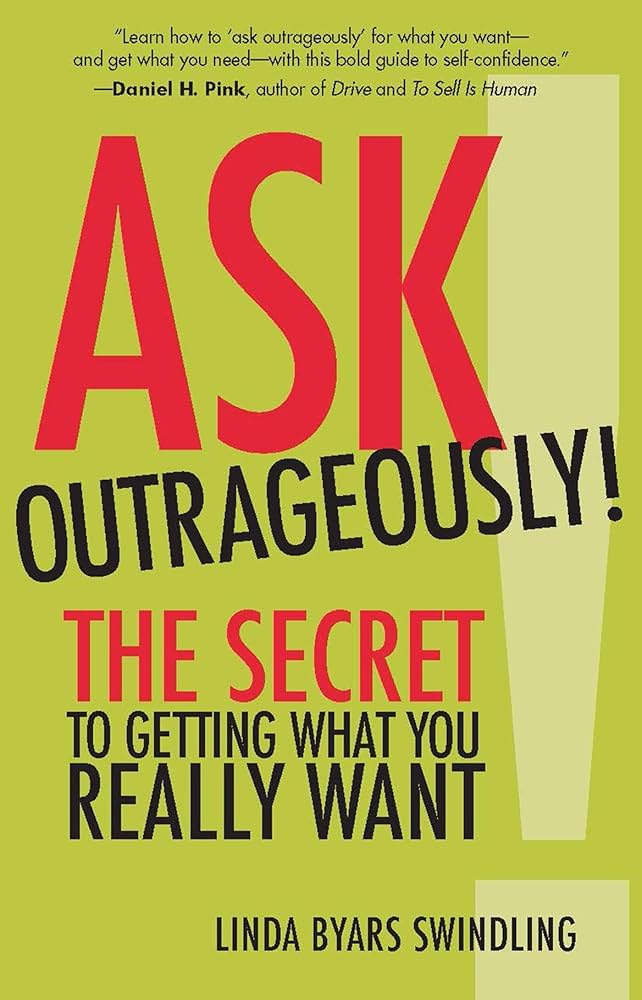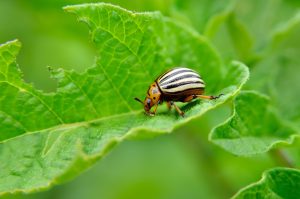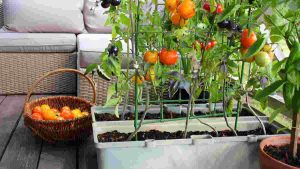Gardening is a rewarding hobby. It transforms spaces and minds alike.
Whether you’re a beginner or a seasoned gardener, discovering new tricks can enhance your gardening experience. This post delves into ten clever tips that can make your garden thrive. Gardening isn’t just about planting seeds. It involves creativity, patience, and a bit of knowledge.
With smart techniques, anyone can cultivate a beautiful garden. Imagine saving water while keeping plants healthy. Or using household items to boost growth. These tips can simplify tasks and solve common gardening problems. From improving soil to battling pests naturally, there’s always something new to learn. These strategies can help you create a flourishing garden with minimal effort. So, let’s explore these practical ideas and make gardening more enjoyable and productive.
Companion Planting
Companion planting boosts garden health by pairing plants that help each other grow. Tomatoes and basil thrive together, improving flavor and pest control. These smart combinations make gardening easier and more productive.Companion planting is a gardening strategy that involves growing different plants close to each other for mutual benefits. This method is not only natural but also highly effective in promoting a healthy garden ecosystem. By carefully choosing which plants to grow together, you can enhance growth, deter pests, and even improve flavor.
Mutual Benefits
Companion planting creates a symbiotic relationship between plants. Some plants can naturally repel pests, reducing the need for chemical pesticides. Others can enhance nutrient availability, making sure their neighbors thrive. Consider this: basil and tomatoes. Basil can ward off insects that harm tomatoes, while also enhancing their flavor. This partnership is a win-win for any gardener aiming for a bountiful harvest.
Best Pairings
Choosing the right pairs is crucial for successful companion planting. Here are some smart combinations to consider:
- Carrots and Onions: Onions repel carrot flies, while carrots help onions by loosening the soil.
- Beans and Corn: Beans fix nitrogen, enriching the soil for corn, while corn offers support for climbing beans.
- Marigolds and Almost Anything: Marigolds deter nematodes and other garden pests, making them versatile companions.
Have you ever noticed how some plants seem to thrive better when grown together? Next time you plan your garden, think about pairing plants that can support each other. It’s like creating a little community where everyone pitches in for the common good. By experimenting with different combinations, you can discover what works best in your garden. What pairings will you try this season?

Credit: www.growveg.com
Soil Enrichment
Healthy plants start with rich soil. Enriching soil creates better growth conditions. It boosts plant health and improves yields. Knowing how to enrich soil can transform your garden. Let’s explore two key methods.
Composting Basics
Composting is simple and effective. It turns kitchen scraps into rich soil. Use vegetable peels, fruit scraps, and coffee grounds. Avoid meat and dairy to prevent pests. Mix in dry leaves or shredded paper. This balance creates a nutrient-rich compost. Turn the pile every few weeks. This speeds up the decomposition process.
Compost improves soil texture and adds nutrients. It helps retain soil moisture. This reduces the need for frequent watering. Composting is eco-friendly and reduces waste. Start a compost pile today and see the benefits.
Natural Fertilizers
Natural fertilizers provide essential nutrients. They are safe for the environment. Use materials like bone meal, fish emulsion, and seaweed extract. Bone meal is rich in phosphorus. It helps root development. Fish emulsion contains nitrogen. It promotes leafy growth.
Seaweed extract offers trace minerals. It supports overall plant health. These fertilizers improve soil fertility. They are easy to apply and cost-effective. Natural options are better for long-term soil health. Choose natural fertilizers for a thriving garden.
Watering Techniques
Watering your garden effectively is crucial for plant health and growth. Smart techniques can conserve water and support your plants. Here are some innovative methods to improve your watering routine.
Efficient Water Use
Using water wisely is key to a thriving garden. Water early in the morning or late in the afternoon. This reduces evaporation and ensures plants absorb moisture. Aim for the base of the plant, not the leaves. This targets the roots directly, where it’s needed most.
Consider using mulch around your plants. It helps retain moisture and reduces the need for frequent watering. Check soil moisture before watering. A simple finger test can determine if your plants need more hydration. Efficient use of water saves resources and promotes healthy growth.
Diy Irrigation Systems
Building a DIY irrigation system can simplify your watering tasks. Drip irrigation is a popular choice. It delivers water directly to the roots, minimizing waste. You can create a drip system using plastic tubing and emitters. This setup can be customized for your garden layout.
Another option is a soaker hose. These hoses release water slowly along their length. Place them around plants for consistent moisture delivery. A rain barrel can collect water for these systems. It reduces reliance on tap water and is environmentally friendly.
These systems automate watering, saving time and effort. Investing in DIY irrigation can enhance your gardening experience.

Credit: www.amazon.com
Pest Control
Pest control is crucial for a thriving garden. Unwanted pests can damage plants and reduce yields. Effective strategies can protect your garden from these invaders. Let’s explore some smart tips.
Natural Deterrents
Natural deterrents keep pests away without chemicals. Plant marigolds for their strong scent. It repels many insects. Garlic spray is another effective option. Mix water, crushed garlic, and dish soap. Spray on plants to deter pests.
Essential oils like peppermint and rosemary can also help. Mix a few drops with water and spray. These oils confuse pests and keep them at bay.
Beneficial Insects
Encourage beneficial insects in your garden. Ladybugs eat aphids, a common pest. Attract them with flowering plants. Daisies and yarrow work well.
Another helpful insect is the praying mantis. They consume a wide range of pests. Release them in your garden for natural control. Lacewings are also valuable allies. Their larvae feast on soft-bodied insects.
Planting a variety of flowers attracts these helpful insects. A diverse garden supports a balanced ecosystem. This reduces the need for chemical pest controls.
Vertical Gardening
Vertical gardening offers a smart solution for small spaces. It maximizes growth and minimizes clutter. Discover tips that boost your garden’s potential and create a lush, vibrant display.Vertical gardening is a fantastic way to maximize your gardening space, especially if you’re dealing with limited room. It’s not just for urban gardeners; anyone can benefit from a little vertical creativity. Imagine transforming your walls or fences into lush, green canvases that are both beautiful and functional.
Space-saving Ideas
Think about all the vertical surfaces in your home or garden that are just waiting to be utilized. Walls, fences, and even balcony railings can become thriving gardens. Using vertical planters, pocket planters, or even repurposed shoe organizers can work wonders. Consider hanging pots or stacking planters to make use of any available space. This approach not only saves ground space but also makes harvesting or trimming a breeze. You might find that your vertical garden adds a charming aesthetic to your living space while providing fresh produce or herbs.
Suitable Plants
When choosing plants for your vertical garden, think about what grows well in confined spaces. Herbs like basil, mint, and thyme flourish in vertical settings and offer the added benefit of fresh flavors for your kitchen. Strawberries and cherry tomatoes are excellent choices if you’re looking to cultivate a fruit or vegetable garden. Keep in mind the amount of sunlight your vertical garden will receive. Some plants, such as ferns and hostas, thrive in the shade, making them perfect for areas with less direct sunlight. By selecting the right plants, your vertical garden can thrive in almost any environment. Have you ever tried vertical gardening? It might just be the solution to your space constraints while adding a touch of green to your surroundings.
Seasonal Planting
Seasonal planting is the secret sauce to a thriving garden. It’s all about knowing what to plant and when to plant it. Tailoring your gardening efforts to the seasons can lead to healthier plants and bountiful harvests. Dive into these simple yet effective tips on seasonal planting that can transform your garden into a year-round paradise.
Climate Considerations
Understanding your local climate is crucial for successful seasonal planting. Are you living in a region with harsh winters or sweltering summers? Knowing the average temperatures and rainfall patterns can guide your planting choices.
Consider the hardiness zones. These zones are your roadmap to selecting plants that can withstand the weather extremes in your area. A little research can save you time and effort, and prevent disappointment.
It’s helpful to talk to local gardeners or check online communities. They can offer insights into what thrives during different seasons in your region. Are you aware of the microclimates in your garden that might affect your plants?
Crop Rotation
Crop rotation is not just for farmers; it’s a smart strategy for home gardeners too. Rotating your crops can prevent soil depletion and reduce the risk of pests and diseases. Different plants use different nutrients, so rotating helps maintain soil health.
Consider dividing your garden into sections and rotate what you plant in each area every year. Start with leafy greens in one section this season, followed by root vegetables in the next. This keeps the soil balanced and productive.
Have you ever noticed certain plants seem to struggle in the same spot year after year? Implementing crop rotation can be the game-changer your garden needs. Experiment with different rotations and watch how your garden responds.
Are you ready to try these tips in your garden? What seasonal planting strategies have worked for you?
Pruning Methods
Pruning is an essential gardening skill that not only enhances the beauty of your plants but also boosts their health and productivity. Mastering pruning methods can transform your garden from ordinary to exceptional. With the right tools, timing, and techniques, you can guide your plants to grow stronger and more vibrant.
Tool Selection
Choosing the right pruning tools can make a big difference. Imagine trying to trim a hedge with a pair of scissors—it’s not only ineffective but frustrating. Invest in quality tools like bypass pruners for clean cuts on live wood and loppers for thicker branches.
Consider the size and type of plants in your garden. A small hand pruner is perfect for delicate flowers, while a sturdy saw may be necessary for larger trees. Keep your tools sharp and clean to ensure precise cuts and prevent plant diseases.
Timing And Techniques
Timing is crucial in pruning. Prune flowering shrubs right after they bloom to avoid cutting off next season’s buds. For fruit trees, late winter is ideal before new growth starts. This encourages better fruit yield.
Use techniques that suit the plant. Deadheading helps flowers continue blooming. Thinning allows light and air circulation, promoting healthier growth. Are your plants looking overcrowded? It might be time to thin them out.
Pruning can feel intimidating, but think of it as a conversation with your garden. You guide and encourage it to grow in the direction you envision. Can you see the potential in your garden with a little strategic pruning?

Credit: www.amazon.com
Mulching Strategies
Mulching is an essential strategy for any gardener. It offers multiple benefits to your plants and soil. By using the right mulching techniques, you can improve plant health and garden appearance. Let’s explore two key mulching strategies: Weed Suppression and Moisture Retention.
Weed Suppression
Weeds compete with your plants for nutrients. Mulching forms a barrier that blocks sunlight. Without sunlight, weed seeds struggle to sprout. Use organic mulch like wood chips or straw. These materials break down over time, enriching your soil. For effective weed control, apply mulch 2-3 inches thick. This thickness suffocates most weed seedlings. Reapply mulch as needed, especially after heavy rain.
Moisture Retention
Mulch helps soil hold moisture by reducing evaporation. This is crucial during hot, dry months. A consistent moisture level supports healthy plant growth. Organic mulches absorb water and release it slowly. This benefits plants by providing a steady water supply. Place mulch around the base of plants, leaving space around the stems. This prevents rot and allows air circulation. Regularly check the mulch layer. Add more if it becomes thin or patchy.
Seed Starting
Starting seeds is a magical part of gardening that can transform a tiny packet into a lush garden. The joy of watching a seed sprout and grow into a thriving plant is unparalleled. Whether you’re new to gardening or a seasoned pro, understanding the ins and outs of seed starting can make all the difference in your garden’s success.
Indoor Germination
Indoor germination gives you a head start on the growing season. You can begin weeks before the last frost date, allowing your seedlings to flourish indoors before it’s safe to plant them outside. Choose a sunny windowsill or use grow lights to ensure your seeds get the light they need.
Keep your seeds warm by placing them on top of the refrigerator or using a seedling heat mat. Warmth speeds up germination, ensuring your seeds sprout quickly and healthily. Have you ever tried using old egg cartons for seed trays? They work wonders and are eco-friendly.
Remember to keep the soil moist but not soggy. Overwatering can lead to mold or rot. Use a spray bottle for gentle watering to maintain the right moisture level. How do you ensure your seedlings are getting enough water?
Transplanting Tips
Transplanting seedlings can be tricky, but with the right approach, your plants will thrive. Start by hardening off your seedlings. Gradually expose them to outdoor conditions to reduce transplant shock. Begin with a couple of hours and increase the time daily.
Choose a cloudy day or early evening for transplanting to avoid the intense sun. It reduces stress on young plants. Dig a hole slightly larger than the seedling’s root ball and water the hole before placing the plant inside.
Handle the seedlings gently by the leaves, not the stem, to prevent damage. Firmly press the soil around the roots to secure the plant. Have you ever tried using a spoon for transplanting? It’s a handy tool that minimizes root disturbance.
Harvesting Tips
Discover smart gardening tips to enhance your harvest. These simple tricks help you grow healthier plants and bigger yields. Perfect for gardening enthusiasts seeking effective and easy-to-follow advice.Harvesting your garden’s bounty is both rewarding and a bit of an art. Knowing the right time to pick your produce and how to store it can make a significant difference in taste and longevity. With these harvesting tips, you’ll make the most out of your hard work, ensuring that your fruits and vegetables are at their peak when they reach your kitchen.
Peak Ripeness
Timing is everything when harvesting. Picking your produce at peak ripeness ensures maximum flavor and nutritional value. For tomatoes, look for a rich, even color and a slight softness when gently squeezed. Zucchinis are best when they’re about 6 to 8 inches long, while cucumbers should be firm and bright green. Have you ever noticed that picking in the morning yields crisper, fresher produce? The coolness of the morning helps retain moisture, giving you the best quality.
Storage Solutions
Proper storage is key to extending the life of your harvest. Leafy greens last longer if you wrap them in a damp paper towel and store them in a perforated bag in the fridge. Root vegetables like carrots and beets can be stored in a cool, dark place. Consider using a sand box to keep them fresh. Ever try freezing herbs in olive oil? It’s a simple way to preserve their flavor for months. Just chop, fill an ice cube tray, and cover with oil. By mastering these tips, you ensure that every bite is as fresh as possible. What’s your favorite way to store your garden’s bounty?
Frequently Asked Questions
What Is The Gardening 3 Year Rule?
The gardening 3-year rule suggests rotating crops every three years to prevent soil depletion and reduce pests. Changing plant locations improves soil health and productivity. This practice ensures balanced nutrient distribution and minimizes the risk of plant diseases, promoting sustainable gardening and healthier plants.
What Is The 3-hour Rule For Gardening?
The 3-hour rule advises gardening during cooler parts of the day. Work three hours after sunrise or before sunset. This approach helps avoid heat stress, conserves water, and protects plants. It ensures both gardener comfort and optimal plant health.
What Is The Rule Of 3 In Gardening?
The rule of 3 in gardening suggests grouping plants in sets of three. This enhances visual appeal and balance in landscapes. Odd numbers create a natural, less symmetrical look, making gardens more attractive. Utilizing varied textures and heights adds depth, ensuring a harmonious garden design.
What Are The 10 Steps To Planting A Garden?
1. Choose a sunny location. 2. Test the soil. 3. Improve soil quality. 4. Plan garden layout. 5. Select plants. 6. Purchase seeds or seedlings. 7. Prepare planting area. 8. Plant seeds or seedlings. 9. Water regularly. 10. Maintain and monitor growth.
Conclusion
Gardening offers endless possibilities for creativity and relaxation. These tips make it easier. Use them to enhance your garden’s beauty and productivity. Enjoy watching your plants thrive. Share your gardening experiences with friends and family. Teach others what you’ve learned.
Gardening connects us to nature. It encourages patience and responsibility. Every garden is unique, just like its gardener. Keep experimenting with new ideas. Stay curious about nature’s wonders. Whether you grow flowers or veggies, each effort counts. Gardening is a journey of discovery.
Happy gardening!




